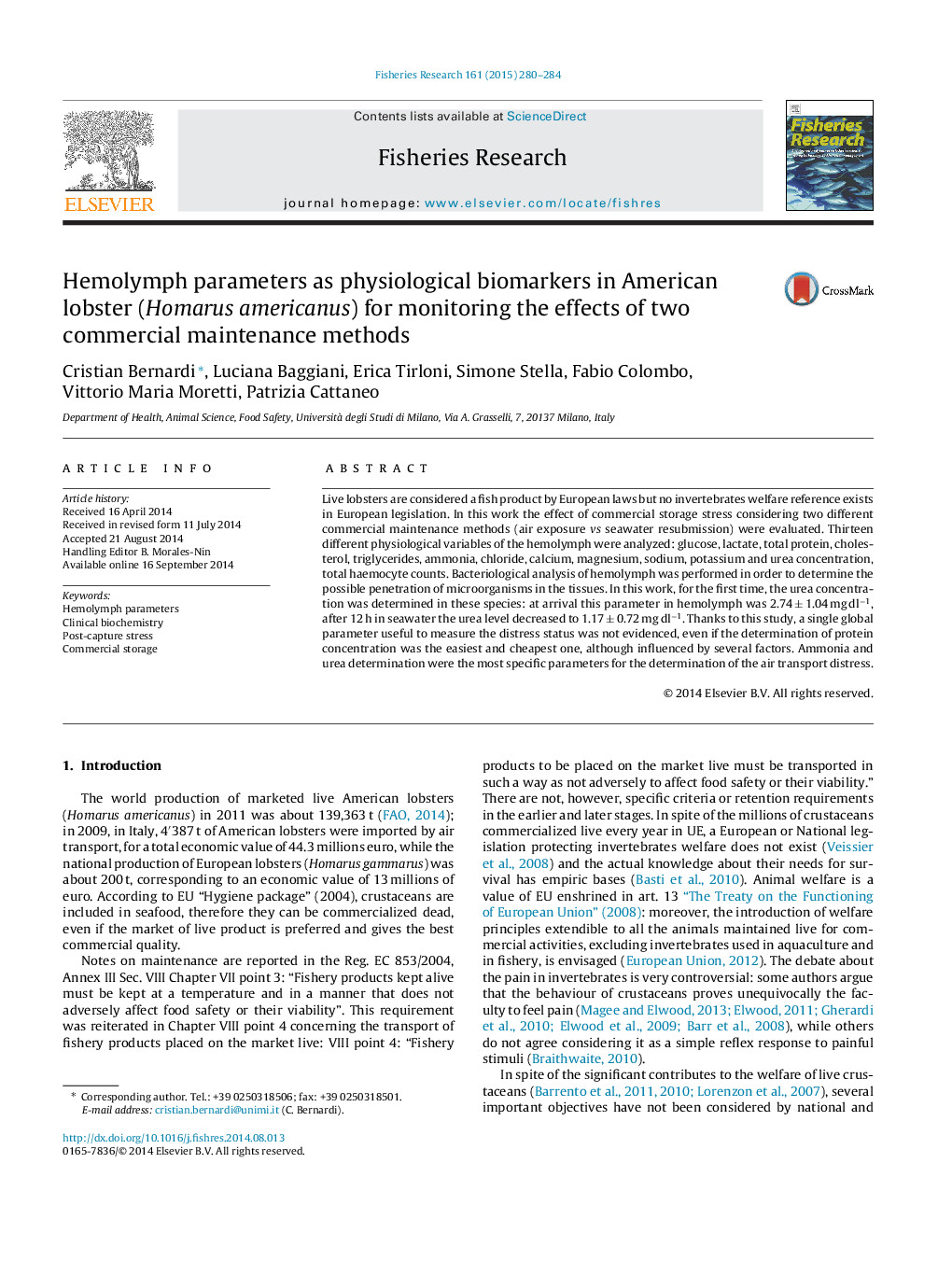| Article ID | Journal | Published Year | Pages | File Type |
|---|---|---|---|---|
| 6385829 | Fisheries Research | 2015 | 5 Pages |
â¢A European legislation protecting invertebrates welfare does not exist.â¢The distress status of American lobster was measured in commercial holding tanks.â¢Glucose and protein concentrations are good parameters to assess distress status.â¢Protein concentration is the easiest and cheapest parameter considered.â¢Ammonia and urea are the most specific parameters linked to air transport distress.
Live lobsters are considered a fish product by European laws but no invertebrates welfare reference exists in European legislation. In this work the effect of commercial storage stress considering two different commercial maintenance methods (air exposure vs seawater resubmission) were evaluated. Thirteen different physiological variables of the hemolymph were analyzed: glucose, lactate, total protein, cholesterol, triglycerides, ammonia, chloride, calcium, magnesium, sodium, potassium and urea concentration, total haemocyte counts. Bacteriological analysis of hemolymph was performed in order to determine the possible penetration of microorganisms in the tissues. In this work, for the first time, the urea concentration was determined in these species: at arrival this parameter in hemolymph was 2.74 ± 1.04 mg dlâ1, after 12 h in seawater the urea level decreased to 1.17 ± 0.72 mg dlâ1. Thanks to this study, a single global parameter useful to measure the distress status was not evidenced, even if the determination of protein concentration was the easiest and cheapest one, although influenced by several factors. Ammonia and urea determination were the most specific parameters for the determination of the air transport distress.
